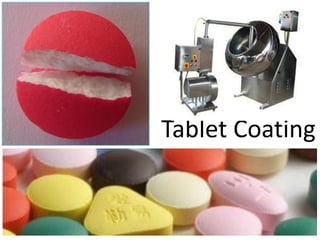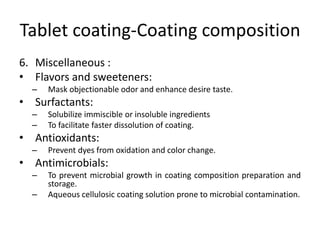This document discusses tablet coating. Tablet coating involves applying a dry outer layer onto tablets to provide benefits like masking taste or controlling drug release. It describes the objectives of coating like protecting drugs from the environment or stomach acid. The key components of coating are the tablet properties, coating process/equipment, and coating composition. Common coating equipment includes pans, perforated pans, and fluidized beds. Parameters like air flow, temperature, and coating application rate must be optimized. The facility must meet GMP requirements and have space for coating equipment. Coating provides benefits but involves optimizing many processing parameters.







































































